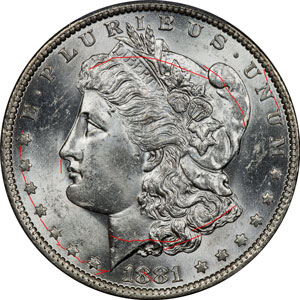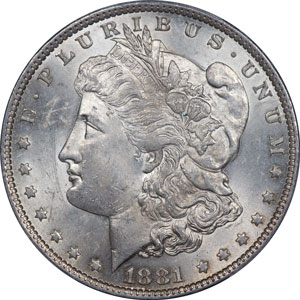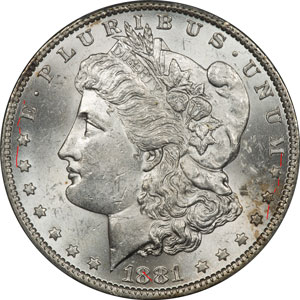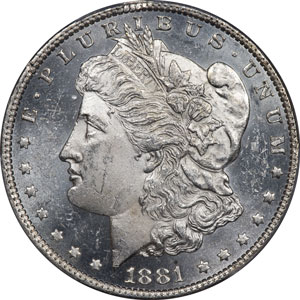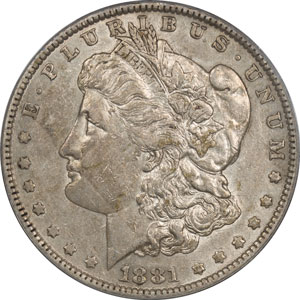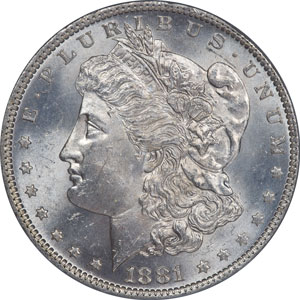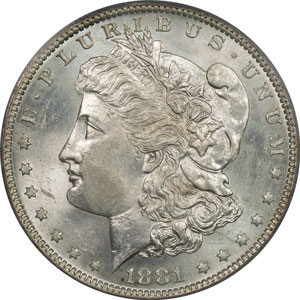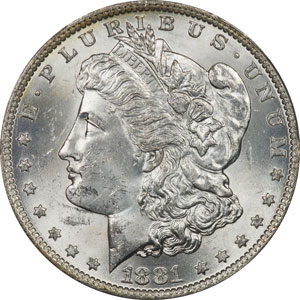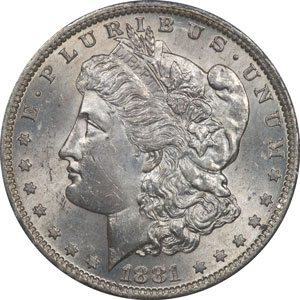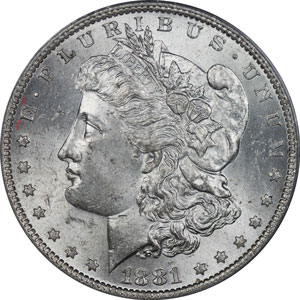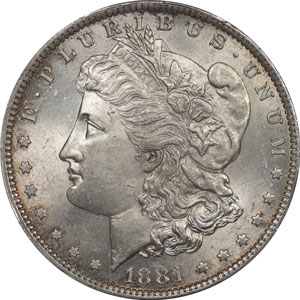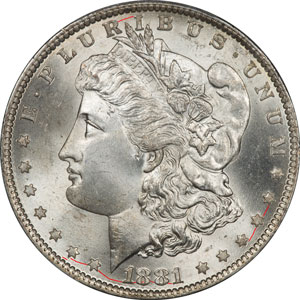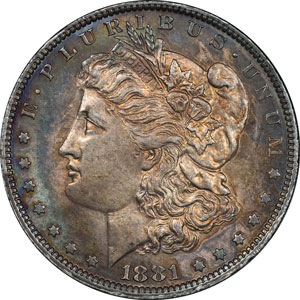
July 2017 - Welcome
Sources
Search
Contact
Home
Welcome
Click on year to expand
2022
2021
2020
2019
2018
2017
2016
2015
Welcome
New VAM 73
On Our Reading List
![]() In mid-June we received images for 20 coins back from VSS and we added them to the web site, bringing our total inventory to 754 coins. A brief audit of our inventory proved that in all the activity over the past three years we could account for all the coins. This is a small miracle given all the activity.
In mid-June we received images for 20 coins back from VSS and we added them to the web site, bringing our total inventory to 754 coins. A brief audit of our inventory proved that in all the activity over the past three years we could account for all the coins. This is a small miracle given all the activity.
![]()
![]() We also sent to VSS in late June another 20 PCGS graded coins for analysis. These range in grade from AU58 to MS64, so there is a little grade variety in the mix.
We also sent to VSS in late June another 20 PCGS graded coins for analysis. These range in grade from AU58 to MS64, so there is a little grade variety in the mix.
![]()
![]() In mid-May we sent to VSS another 100 raw coins for grading and then for VAM analysis. These came back unexpectedly early but did not have the results we were hoping for when they were submitted. We knew the group was of lower grade than we normally send, but only half of the coins graded. So our quest to build the inventory will probably take a different track between now and the end of the year.
In mid-May we sent to VSS another 100 raw coins for grading and then for VAM analysis. These came back unexpectedly early but did not have the results we were hoping for when they were submitted. We knew the group was of lower grade than we normally send, but only half of the coins graded. So our quest to build the inventory will probably take a different track between now and the end of the year.
![]()
![]() The analysis of die cracks, or "fingerprints" as we like to refer to them, continues and that detail is below on this page as well as on some new pages added to the Studies section of the web site and accessible from the top menu.
The analysis of die cracks, or "fingerprints" as we like to refer to them, continues and that detail is below on this page as well as on some new pages added to the Studies section of the web site and accessible from the top menu.
Inventory Progress
From the beginning of this project one of our goals has been to maintain an inventory for grading purposes of 1% or more of each PCGS grade for which a coin exists. So where do we stand?
For almost all grades we are well within the target inventory. But there are some exceptions of course. Our goal of acquiring or grading a complete set of VAMs makes the inventory grow naturally between AU58 and MS64 because this is where the balance between cost and identification meet. Below AU58 we are generally just growing the inventory to provide additional grading examples. In fact we hold most of the PCGS graded coins below AU58, which we believe makes the grading side of our site quite unique. We have another 140 coins in the pipeline that will expand this even more.
At MS64 the cost of the coins more than doubles from MS63, and the multipliers grow quickly from there on up. However, with the exception of MS65 we have managed to maintain our 1% goal because so many of those require only one coin. We fell behind with MS65 unknowingly and closed that gap this month with the acquisition of a really nice VAM 17 - Dash Under 8 coin.
But that gets us to another issue. For MS62+PL there are only two; for MS62+DMPL there are but 2; and for MS64+PL there are only three. We know we can close this gap when we want to because of our inventory size. For example, we have ten MS62PL and nine MS62+DMPL coins and believe that at least three would qualify for a + designation. Our MS64PL coins are tougher since we believe they are roughly the same and so we will need to look out for a coin that we think can earn a +.
And then there are the big challenges. There is but one MS65+DMPL and it was only recently graded. It is also highly unlikely to come up for sale even if we could afford it. There are thirty-seven MS66, and but three MS66+. If there is a positive here the prices on the MS66 have declined sharply in recent months and it might be something we can save up for this year. But MS65+DMPL and MS66+ are a different story. With a single coin at MS65+DMPL and a price of $18,500; and only three MS66+ and a price tag of $35,000 these are not likely for many years.
We are shooting for a complete VAM and grading set, but this is quite a challenge. Perhaps a rich uncle will die and leave us his lottery winnings!
Our congratulations to Brent Fogelberg on the discovery of the new VAM 73 - Doubled 18, Scratch Eye Front, Wing Top Gouges. There have been only two discoveries this year and it is nice to have something new on the list.
The VAMworld data is still being added, but finding and looking for new coins in the series is what this is all about. The link to VAMworld for VAM 73 is here.
Voodoo in the "Big Easy"
You begin to understand as you dig into the 1881-O that New Orleans seems to provide an endless backdrop to explore and learn. The meshing and we guess mashing of cultures just brings out stories that can only happen there. Such is the high profile case of the mysterious Marie Laveau.
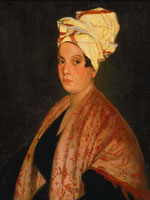
Born in 1801, she was a "free mulatto" with a slave heritage. She dressed like a gypsy and sported a lot of bling in the form of rings, earrings, and bracelets. She always dressed in dark clothes and was generally described as an exceptionally beautiful woman. She married a Jacques Paris and was referred to as the widow Paris. It has been disputed as to whether there were children from their union. She remarried and may have had other children, some say as many as fifteen.
Voodoo has always been a part of the culture in New Orleans, having been brought there by slaves from Africa. Marie began a career as a Voodoo priestess in the 1820s (in addition to a hairdresser) and was believed by many to be the descendant of a long line of Voodoo Priestesses. She gave private consultations and sold gris-gris (Voodoo amulets, love potions, and other magical items), apparently held public dances, did readings, and of course fortune telling. But adding to the confusion is the knowledge that she was a lifelong devout Catholic, something that could only happen in New Orleans.
Why does her story mesh with ours? Well Marie died in June of 1881. She was an acquaintance of many of the prominent and influential people in the city and undoubtedly her passing would have been a big event. It might have also offered a rather strange and entertaining distraction from the everyday working life for many.
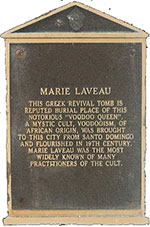 Burials in New Orleans are above ground from necessity. Marie's tomb is still there and is visited daily by Voodoo practitioners, visitors, and just the curious. She is still regarded as the high priestess of Voodoo. Only in New Orleans!
Burials in New Orleans are above ground from necessity. Marie's tomb is still there and is visited daily by Voodoo practitioners, visitors, and just the curious. She is still regarded as the high priestess of Voodoo. Only in New Orleans!
Source: The Louisiana Encyclopedia
Obverse Die Study
We are continuing to analyze die cracks and will post them here as well as on the die pages. We have also added a page to view all the die cracks on all obverse dies so that when we finish there will be a single page for reference. That page can be referenced here and on the Studies link in the menu.
We have already done our first analysis of 28 of the 48 obverse dies. But it becomes necessary that every coin added to the collection going forward becomes a potential replacement for the one shown.
Die 1 will need some special twists because of its extensive use with the 1881-O. There are 29 different VAMs where Die 1 is designated as the obverse.
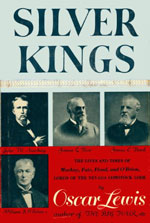 In this well written book the author delves into the lives of four of the most important individuals responsible for the discovery and exploration of the "Big Bonanza." The Comstock Lode and resulting silver discovery had a significant effect on the use of silver as a monetary base, and of course the Morgan Dollar.
In this well written book the author delves into the lives of four of the most important individuals responsible for the discovery and exploration of the "Big Bonanza." The Comstock Lode and resulting silver discovery had a significant effect on the use of silver as a monetary base, and of course the Morgan Dollar.
We enjoyed the book most because it is a deep dive into the lives of the four men, and a more shallow look into mining techniques in the era. Truth is often stranger than fiction, and this is one of those stories that fits that moniker.
If you enjoy reading about the lives of the people who helped shape our nation this is a good adventure. Four true rags to riches stories that helped shape America, for better or worse.
![]()
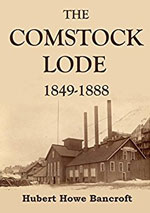 And then there is this brief thirty-six page narrative that is almost a counterpoint to the Silver Kings book. The Comstock Lode 1849-1888 by Hubert Howe Bancroft was published in 1890, so it is a contemporary look at the issues surrounding the discovery and mining practices. An excerpt from a larger history of Nevada, this is an analysis of the legal and technical issues with the Comstock Lode Mines without regard to the personalities and personal lives of the owners. Reading this treatise along with any Comstock Lode book helps balance the view.
And then there is this brief thirty-six page narrative that is almost a counterpoint to the Silver Kings book. The Comstock Lode 1849-1888 by Hubert Howe Bancroft was published in 1890, so it is a contemporary look at the issues surrounding the discovery and mining practices. An excerpt from a larger history of Nevada, this is an analysis of the legal and technical issues with the Comstock Lode Mines without regard to the personalities and personal lives of the owners. Reading this treatise along with any Comstock Lode book helps balance the view.
![]()
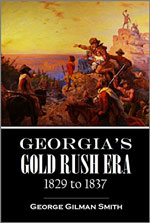 We live in the heart of Georgia's gold region and often think we live and breathe the stories each day. So what else is there to learn? Well apparently a lot since this little book helped explain much of the politics and events leading up to the discovery of gold in Georgia, the Native American exodus, and subsequent gold rush.
We live in the heart of Georgia's gold region and often think we live and breathe the stories each day. So what else is there to learn? Well apparently a lot since this little book helped explain much of the politics and events leading up to the discovery of gold in Georgia, the Native American exodus, and subsequent gold rush.
If you are a collector of Dahlonega gold coins this is a nice supplement to your knowledge of the times. It is short and a very easy read, and there is a lot of supplemental knowledge about the formation of counties in the gold regions that is useful to modern day exploration.
Morgan Dollar "Fingerprints"
Morgan Dollar "Fingerprints"
Obverse Die 35
Obverse Die 45
In May we started an analysis of die cracks that we are likening to the uniqueness of fingerprints. We continue that analysis at this point with dies associated with only one VAM.
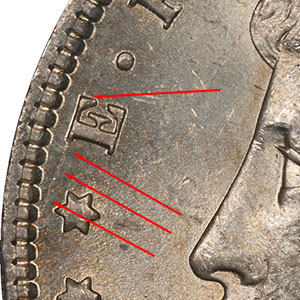
Until the total analysis is complete we will have a separate section of our monthly newsletter at the bottom of the page dedicated to just this issue.
To observe the die cracks and breaks magnification is often needed. Also, high quality images such as the ones we use from VSS also help. Some die cracks are more visible in the high quality images because contrast is easier to create, which reveals the cracks. This analysis is really getting "down in the weeds," but that is a part of what makes this fun. Please remember that you are looking at later die states in most cases and coins of the same die/VAM combination should and will exist without many of these features.
Obverse Die 27
Obverse Die 27 is associated with only VAM 40 (Doubled Ear Inside and Bottom). We have several VAM 40 coins, 21 as of this analysis, and they range from Good 04 to Mint State 64. These images are from a Mint State 64 coin.
Die 27 has a number of cracked areas, two broadly internal to the device that distinguish it from others.
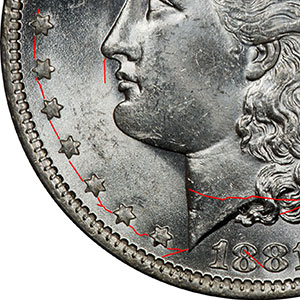
In the bottom left quadrant there is a long crack that traverses all the stars and forks in two places before extending up through the bottom of the bust point. But the real distinction is another crack that cuts across Liberty's neck and extends through the lower hair curls. The crack is hard to distinguish in the hair curls on some of our examples.
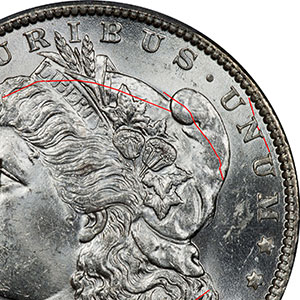
Then in the upper right quadrant and top of the die there are three cracks. One cuts across the back of the phrygian cap. One is toward the rim and extends from the upper U to the lower U in UNUM. And finally, there is one that extends from the back of the cap up through the headband and into the hair above the forehead.
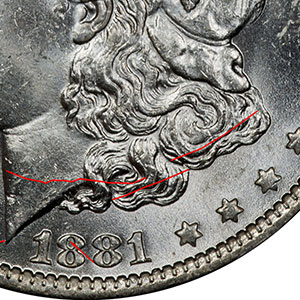
Also at the bottom of the coin the die crack that crosses the neck extends into the hair/ Then a second crack begins below it and extends to the upper hair vee. And then there is a third one that traverses the hair from the hair vee to the back of the head.
Also present is the Spike in 8 feature.
Obverse Die 28
Obverse Die 28 is paired with Reverse Die a to produce VAM 42. We have only two examples of VAM 42 (Doubled Left 8, Die Gouge DO) and both are below Mint State.
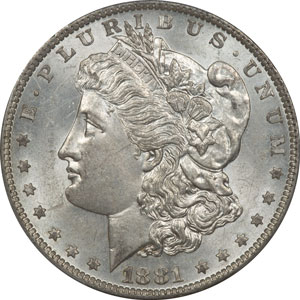
This example is the AU 58 coin and shows no cracks or breaks. Neither does it have the Spike in 8 feature.
Neither of the coins exhibit any signs of obverse die cracks or breaks.
Obverse Die 31
Obverse Die 31 is paired with Reverse Die g to produce VAM 46. We have four examples of VAM 46 (Doubled 18, Dot O) that range in grade from AU 58 through Mint State 2. One of the Mint State coins is monster toned and not appropriate for analysis.
None of the coins exhibit any signs of obverse die cracks or breaks.
Obverse Die 33
As of this discussion we have seven VAM 52 (Doubled 18-1) coins associated with Die 33. Two of these are below Mint State and do not exhibit any die cracks. Of the remaining five coins, two exhibit the same die cracks.

Just in front of Liberty's face there are superficial cracks running from the sixth and seventh stars up through the top of the E.
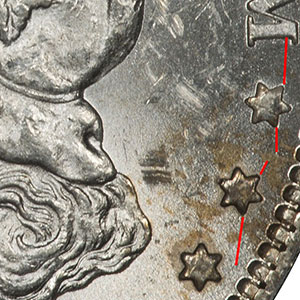
Then similar cracks begin to appear behind the head toward the rim. These start fourth and fifth star and extend up to the lower side of the M in UNUM.
All of the cracks are just beginning to form and can be considered superficial.
Obverse Die 35 is associated with VAM 54 and VAM 66 two of our discovery VAMs. All of the seventeen coins in our collection are Mint State as of this discussion. A disproportionate number of them are either PL or DMPL examples.
Perhaps it is the high proportion of PL and DMPL coins, but none of our examples show any signs of obverse die cracks.
Obverse Die 36
Obverse Die 36 is associated with VAM 55 and its derivative VAM 55A. These are discovery VAMs, but in actuality we discovered VAM 55A and VAM 55 is assumed at this point. Our one coin, the discovery coin, is not great for this analysis and is only an AU 50. If there were minor cracks they have long since worn off this coin.
Our one example does not show any signs of obverse die cracks.
Obverse Die 37
Obverse Die 37 is associated only with VAM 56 (Doubled Right 1 Lower Right). We have three examples, all Mint State coins ranging from MS 62 to MS 64.
None of the coins exhibit any signs of obverse die cracks or breaks.
Obverse Die 38
Obverse Die 38 is associated only with VAM 57 (Doubled Ear Right Inside, O Set Left). We have three examples, all Mint State coins ranging from MS 61 to MS 62.
None of the coins exhibit any signs of obverse die cracks or breaks.
Obverse Die 39
Obverse Die 38 is associated only with VAM 58 (Doubled Left 8). We have only one example, a Mint State 62. This is another of our discovery VAMs and so far only this one example has materialized. So any analysis of this die needs to be done with that limitation in mind.
Our one example does not exhibit any signs of obverse die cracks or breaks.
Obverse Die 40
Obverse Die 40 is associated only with VAM 62. VAM 62 (Doubled Date, Ear Bottom, and Upper Right) is one of our discovery VAMs, but we have now located six examples. All of these coins are Mint State.
In our six examples none exhibit any signs of obverse die cracks or breaks.
Obverse Die 41
Obverse Die 41 is associated only with VAM 63. VAM 63 (Doubled Obverse Stars, O Tilted Left) is one of our discovery VAMs, and we have only one example, a Mint State 62.
In our one example there are no signs of obverse die cracks or breaks.
Obverse Die 43
Obverse Die 43 is associated only with VAM 65. VAM 65 (Doubled 18-1) is one of our discovery VAMs, and we have located five examples, ranging from Mint State 62 to 64.
All five coins exhibit a minor die crack just starting to develop above the E in front of Liberty's eye. There is a very faint Spike in 8 on this die.
Obverse Die 44
Obverse Die 44 is associated only with VAM 67. VAM 67 (Doubled 18 and Upper Reverse) is one of our discovery VAMs, and we have located six examples, ranging from AU 50 to Mint State 62 DMPL. Half of the six examples are either PL or DMPL coins.
Perhaps it is the high proportion of PL and DMPL coins, but none of our examples show any signs of obverse die cracks.
Obverse Die 35 is associated with only VAM 68, one of our discovery VAMs. VAM 68 (Doubled 18, O Tilted Left) is one of our discovery VAMs and we have located four examples so far. The four coins range all the way from Extra Fine 45 to Mint State 65+.
All of our VAM 68 examples show the same die cracks to some extent. The best examples are on the discovery coin. There is a long die crack that begins at the second left star and extends down through the date, terminating just before the last 1.
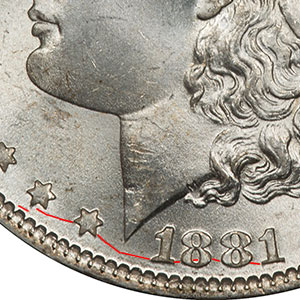
There is a shorter crack extending from the third through fifth right stars.
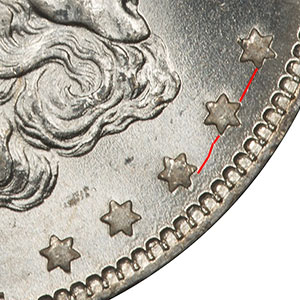
There is a faint crack between the RI above Liberty's crown that is just starting to show and perhaps another faint crack starting to show between the IB.
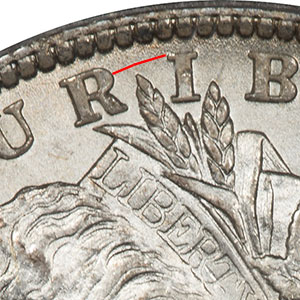
The die shows fatigue all around the rim.
Obverse Die 46
Obverse Die 46 is associated only with VAM 69 (Doubled Profile, Cap, and Left 8, O/O Left). We have two examples, both in Mint State. This is another of our discovery VAMs and a second coin as confirmation is always a relief.
Neither of the coins exhibit any signs of obverse die cracks or breaks, but the Spike in 8 feature is present on this die.
Obverse Die 47
Obverse Die 47 is associated only with VAM 70 (Doubled Cap Top, UNUM, O Set Left). We have only our discovery coin as an example, and it is an AU 53.
Under other circumstances we might want to put a little disclaimer on this one, but the coin in hand looks like it was either PL or DMPL in its earlier life. So we doubt that any die cracks would have shown on this coin even if it were a higher grade.
This one example does not exhibit any signs of obverse die cracks or breaks, but it does have the Spike in 8 feature.
Obverse Die 48
Obverse Die 48 is associated only with VAM 71. VAM 71 (Doubled 18-1, Tripled Left Wreath, Doubled Legend, O Tilted Left) obviously has a lot of features. Even though it is not our discovery, we do own the discovery coin.
In our two examples there are no signs of obverse die cracks or breaks.
Getting Started
Collecting The 1881-O
The 1881-O VAMs





















